Hong Kong Palace Museum
“The Ways in Patterns”
“纹”以载道
Immersive Interactive Visual Environment
沉浸式互动影像空间
May 2025
Blender, Geometry Nodes, Substance Painter,TouchDesigner
“The Ways in Patterns” Immersive Digital Exhibition is on view at the Hong Kong Palace Museum from May to October 2025.
Proudly as a member of Psyche Studio, our team was invited to participate in the production of the Immersive Digital Exhibition “The Ways in Patterns” at the Hong Kong Palace Museum. I was mainly responsible for the 3D aspects of the project, including modeling, texturing, rigging, and animation.
Credits:Xueyi Huang,Raion Xu,Zishi Tu,Zadie Pan,Xuyi Yao
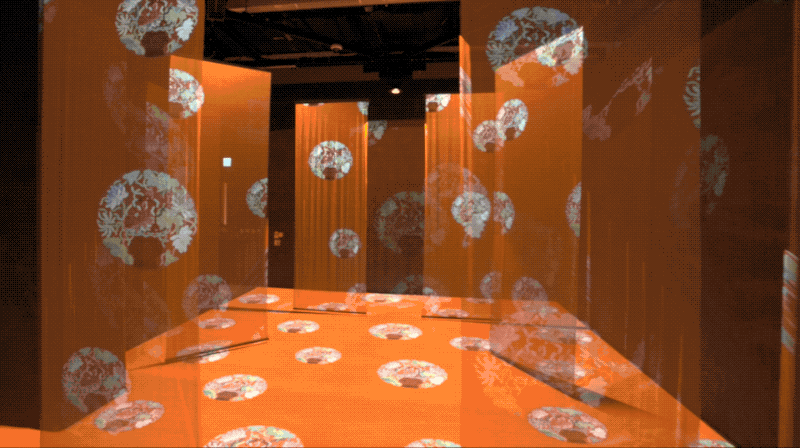
This exhibition marks the first collaborative digital exhibition between the Palace Museum in Beijing and the Hong Kong Palace Museum. Centered around the theme of "patterns" and the concept of "immersion," the exhibition draws from traditional motifs found in ancient architecture, ceramics, and textiles of the Forbidden City. Through digital innovation, it offers audiences a cultural and contemporary artistic interpretation of the meanings behind these patterns.


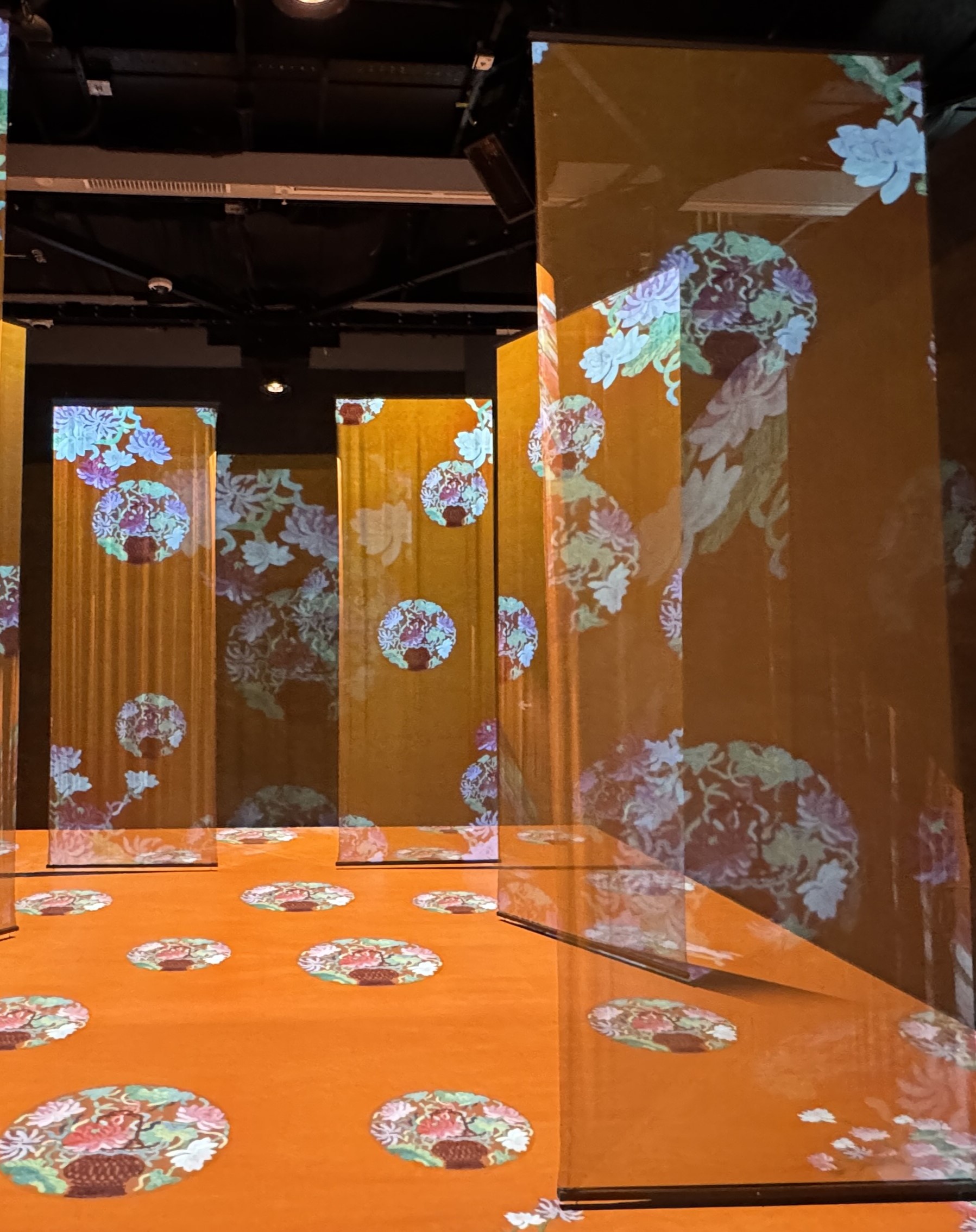

There are three scenes in this project. We were commissioned by the Hong Kong Palace Museum to create interactive projection mapping animations for the exhibition.
The work is inspired by three traditional pattern designs from Qing dynasty imperial garments in the Palace Museum’s collection, which we reinterpreted and brought to life through 3D rebuilding and animation.
Procedualed Animation System
For the Lotus Scene, which features a large number of animated lotus flowers and leaves growing, I developed a procedural blooming system using Geometry Nodes to streamline the modeling and animation process.
This system allows control over the number of petals, color, growth speed, and timing of each flower. Highly reusable and efficient, it significantly reduced the polygon count of the scene and saved a great deal of time on animation adjustments. It can also be adapted for various flower blooming animations.
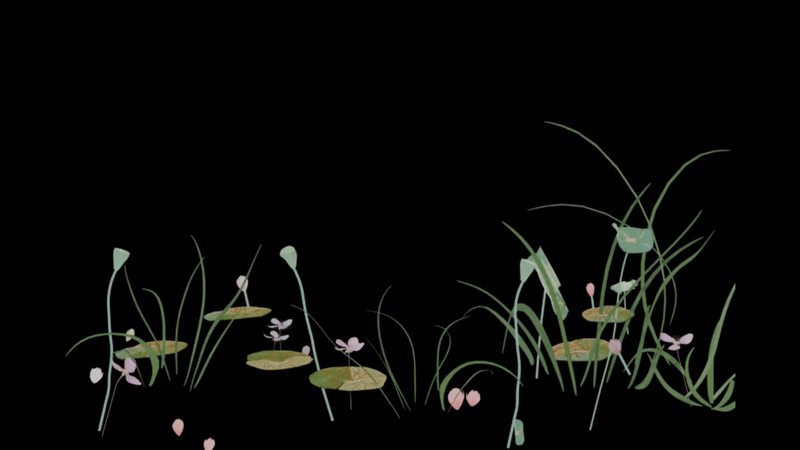
The 3D animated elements of the Lotus Scene, driven by Geometry Nodes

Geometry nodes in Blender

Lotuses generated by the same procedual geometry nodes in Blender
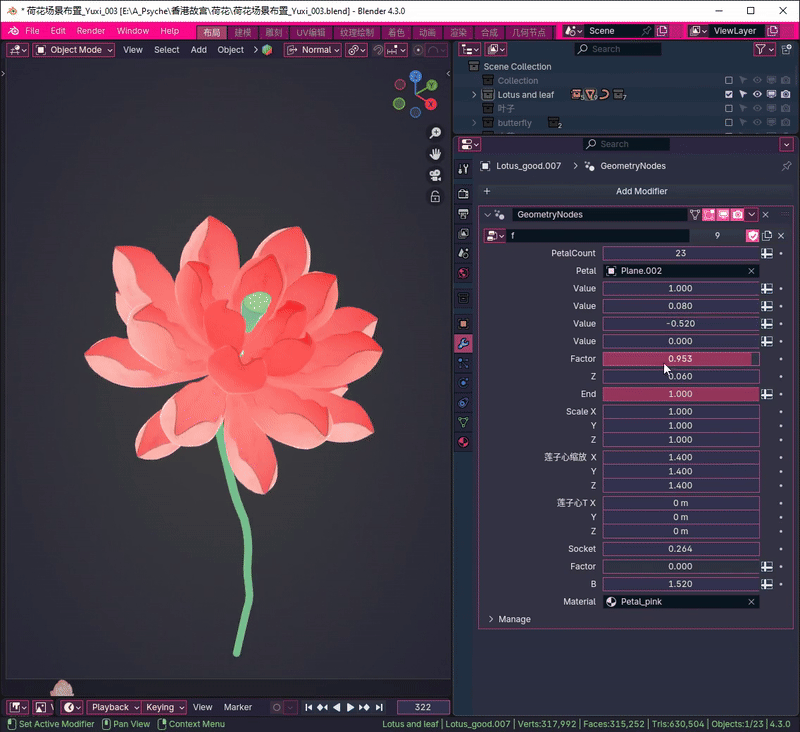

Parameters used for controlling the lotuses
By adjusting parameters, I can quickly generate lotus flowers in various forms — including the number of petals, petal color, and the degree of blooming. 。


The animation of the lotus leaves is more complex compared to that of the flowers, and was also created using Geometry Nodes. I split each leaf into two halves and used the displacement of two separate empty objects to simulate the curling and growing motion of the leaves.
3D Assets
*3D modelling
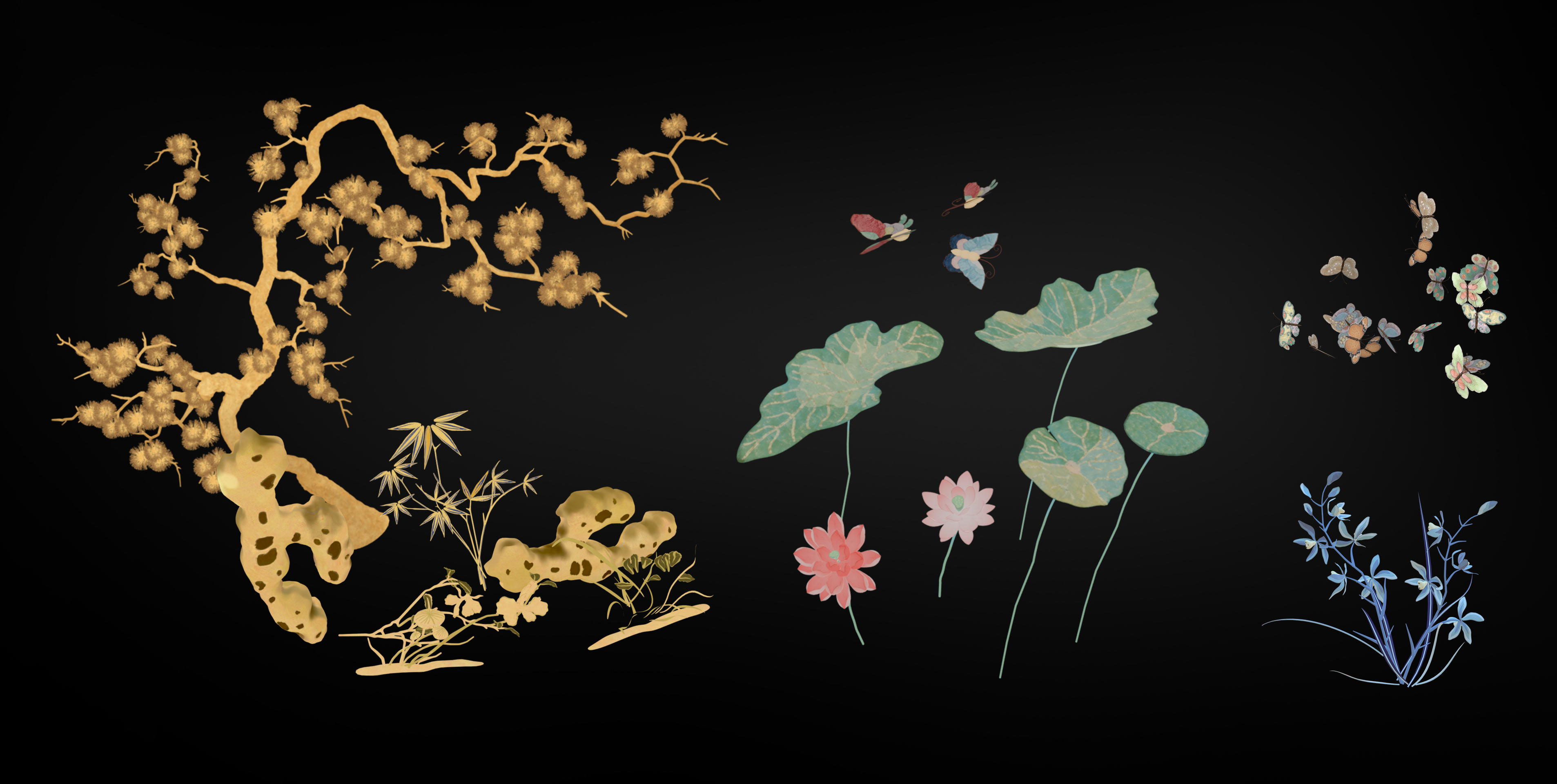
All assets are modelled in Blender
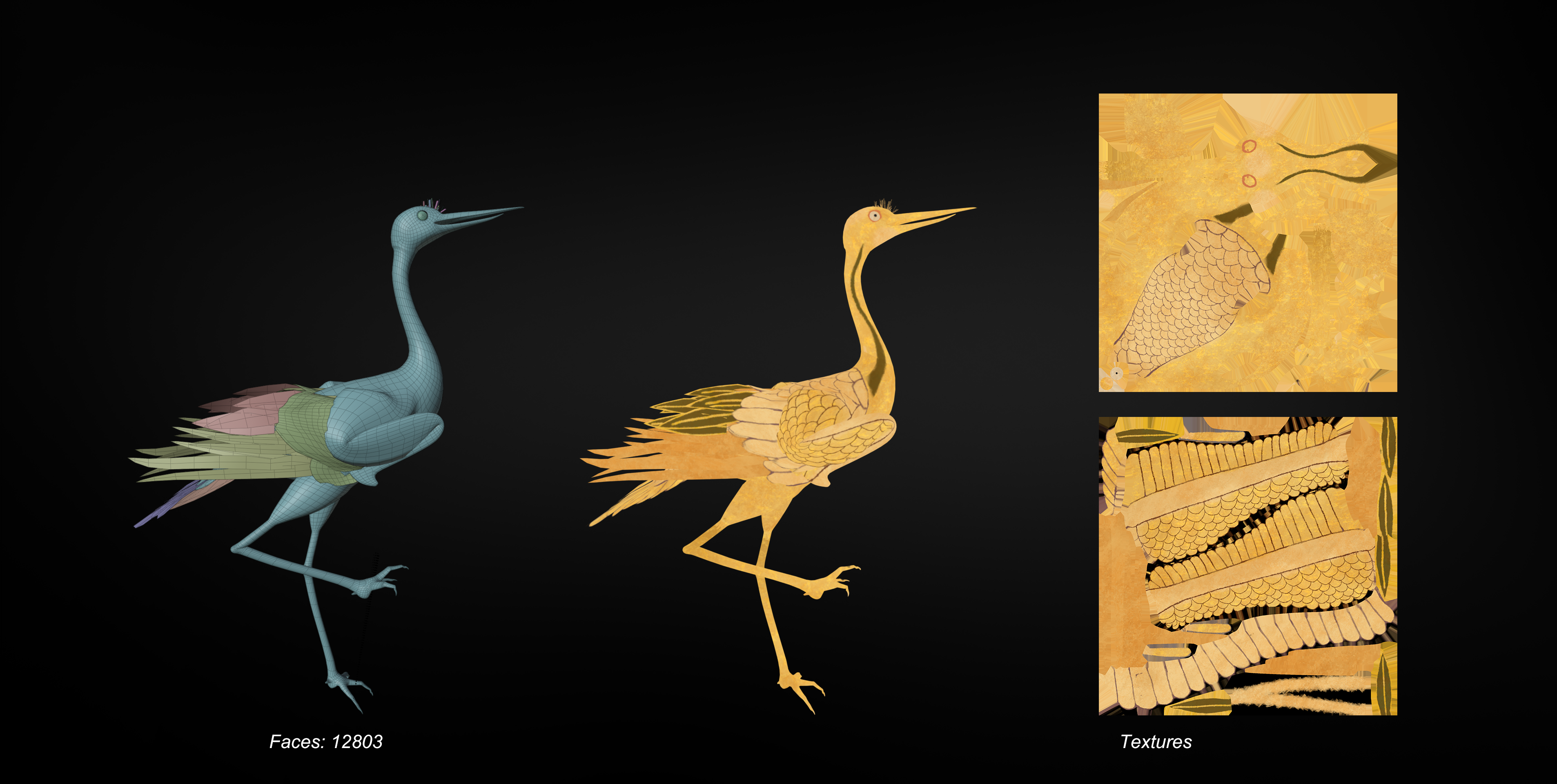
Textured in Substance Painter
*Rigging and Animation
This crane was my first time creating a rig and animation for a bird. While I referenced the anatomy of real cranes, I made stylistic adjustments based on the original pattern and poses found in traditional Chinese paintings to better match the visual language of the original patterns. I find a balance between realism and the aesthetics of classical art in the final model.
It is really difficult at the begining, because if I model the crane base on the original pattern, the wing will be way too long for folding, I have to shorten it but still keep it looks similar to the pattern. I did a lot of research about how the bird wings will fold, it end up with I have to animate all the feathers one by one, which caused a lot of chaos and time, but good news is: the result looks really vivid.
It is really difficult at the begining, because if I model the crane base on the original pattern, the wing will be way too long for folding, I have to shorten it but still keep it looks similar to the pattern. I did a lot of research about how the bird wings will fold, it end up with I have to animate all the feathers one by one, which caused a lot of chaos and time, but good news is: the result looks really vivid.
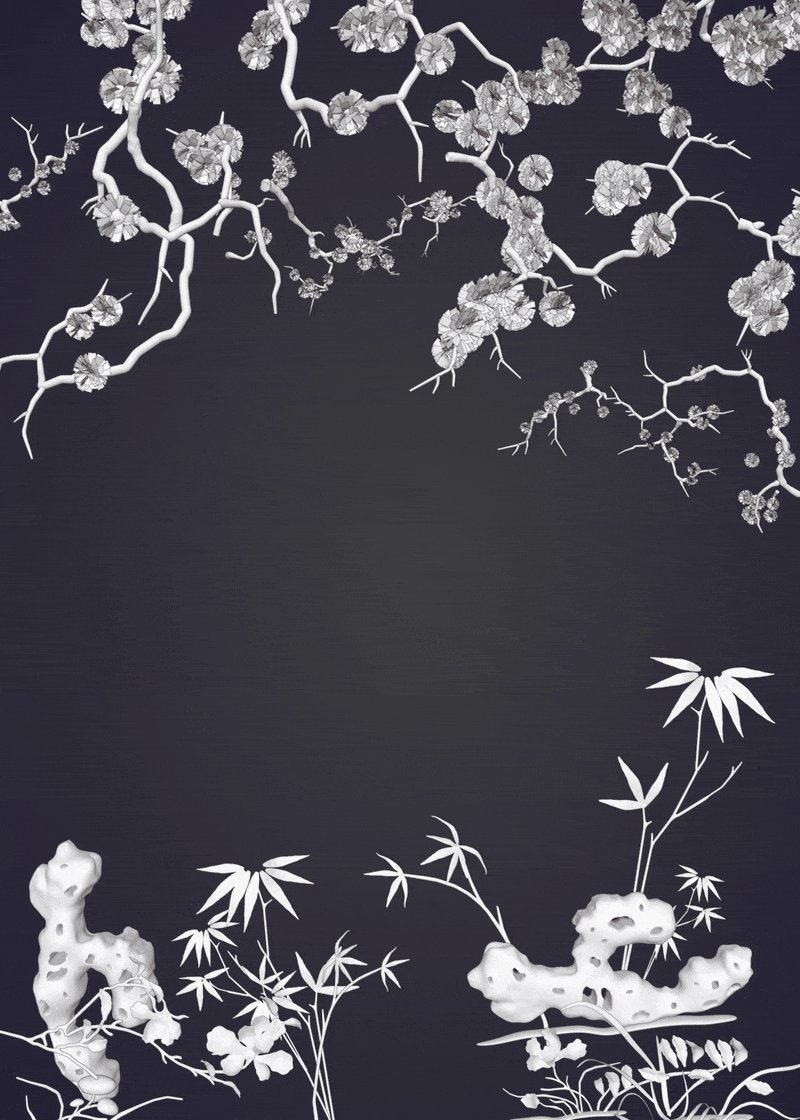
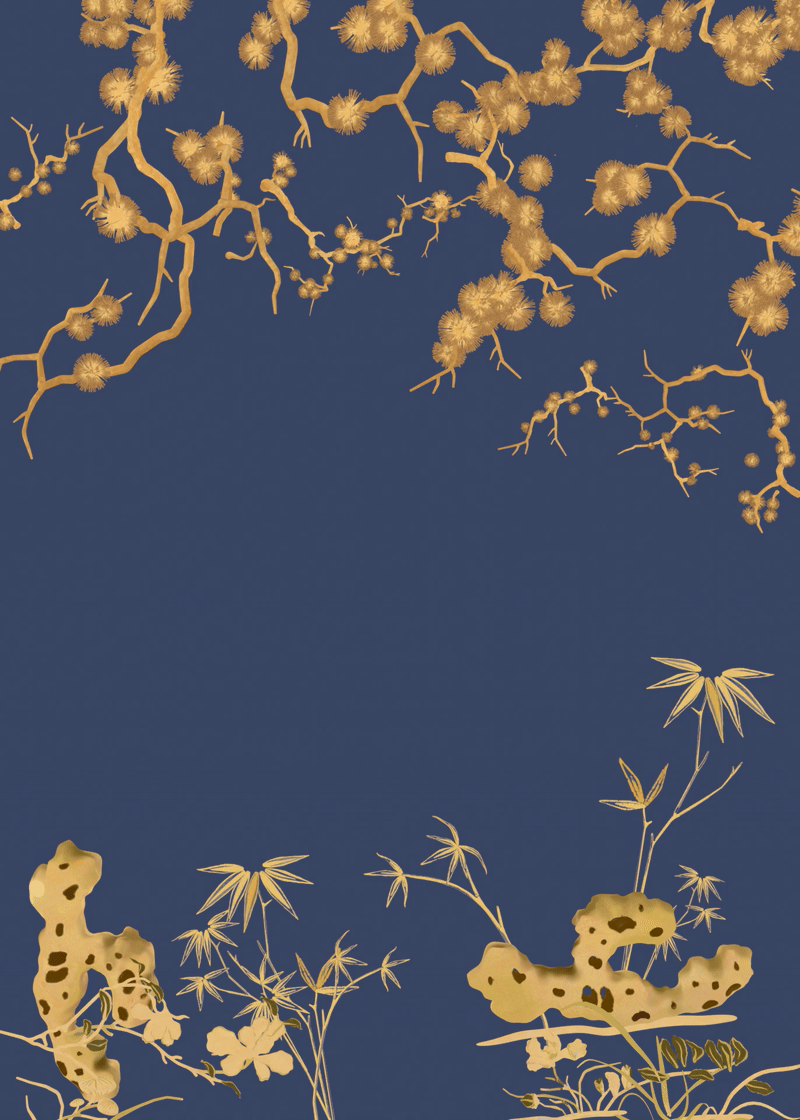

Rigging
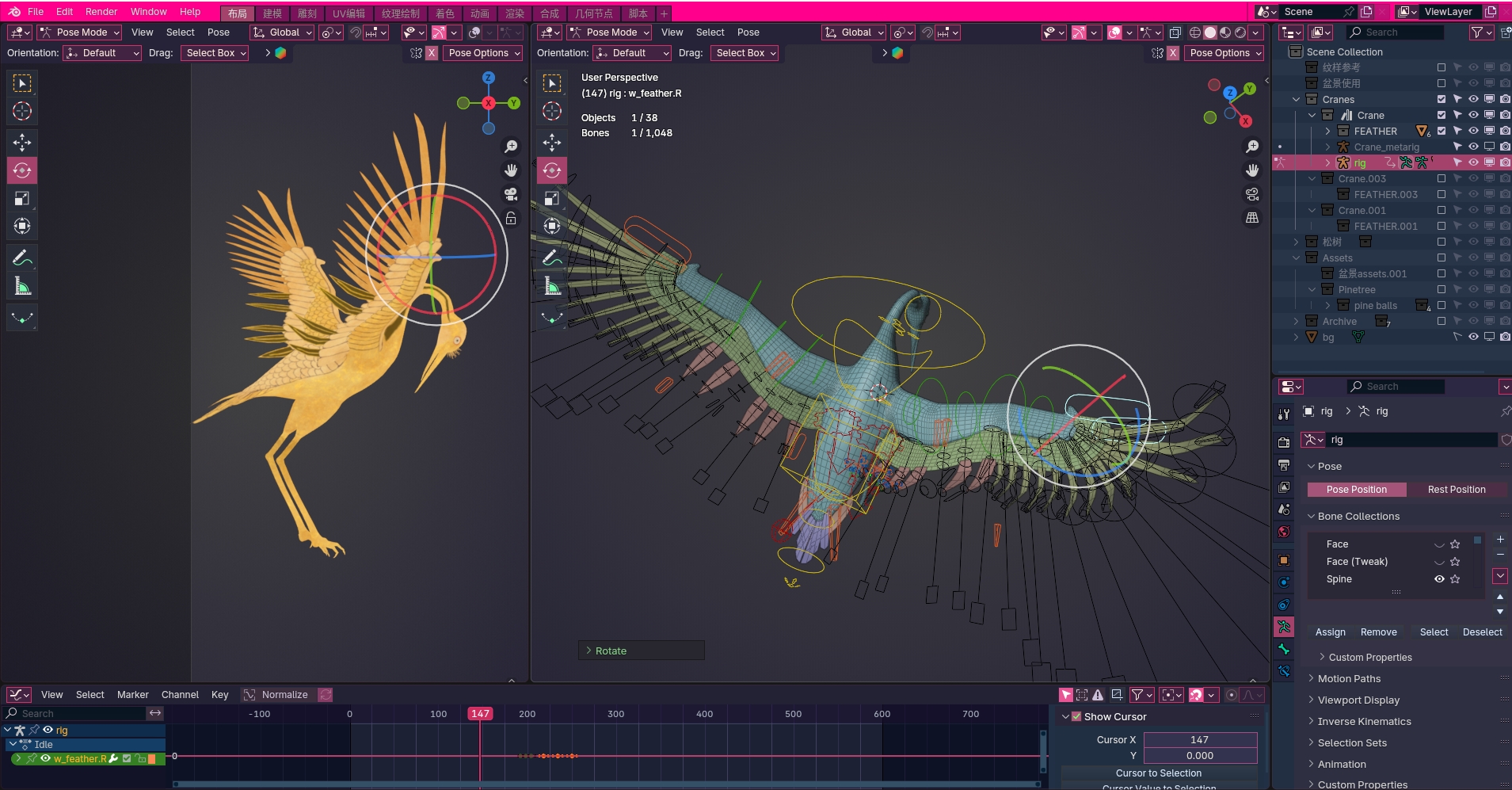
Animation in blender

